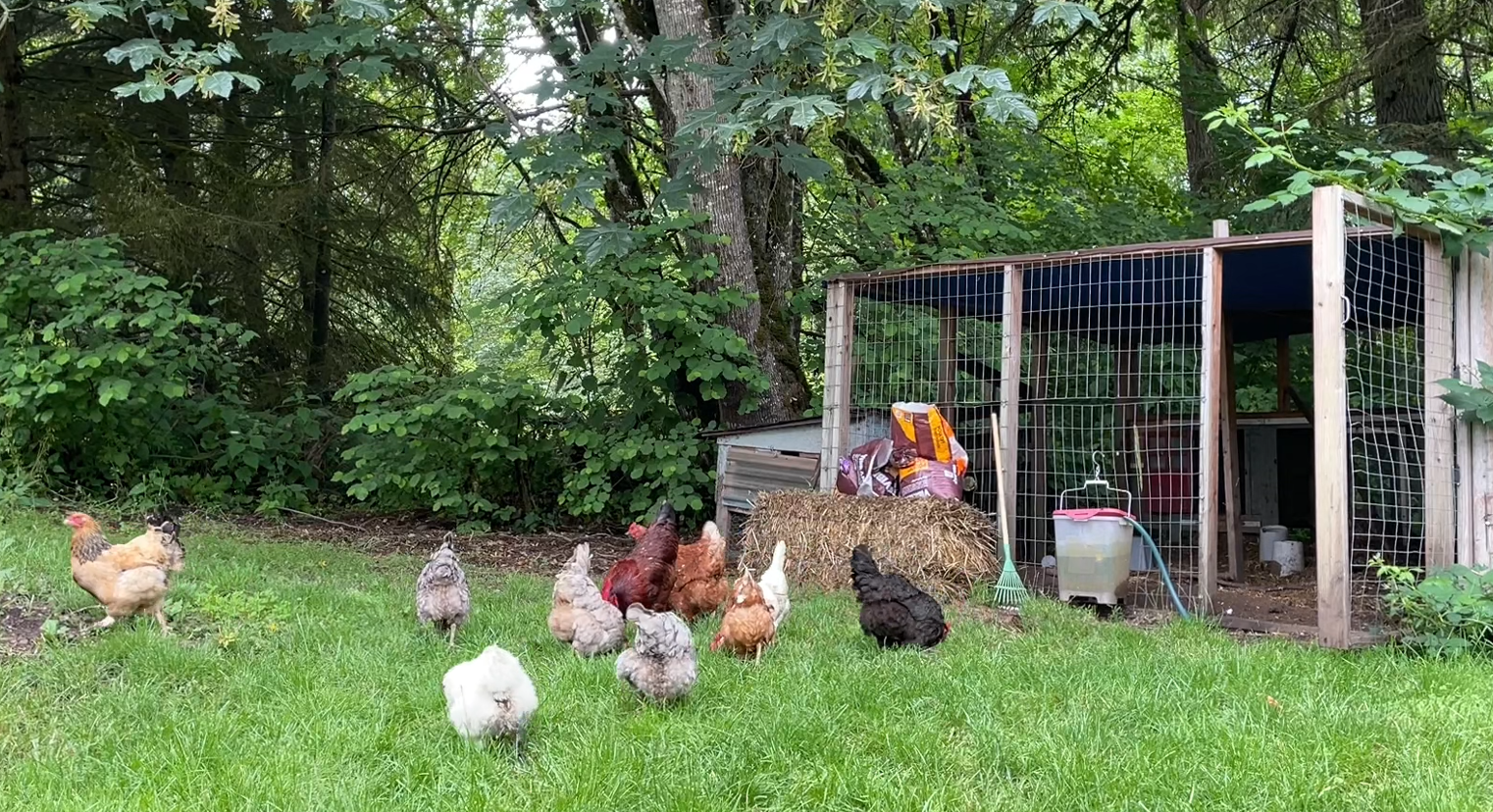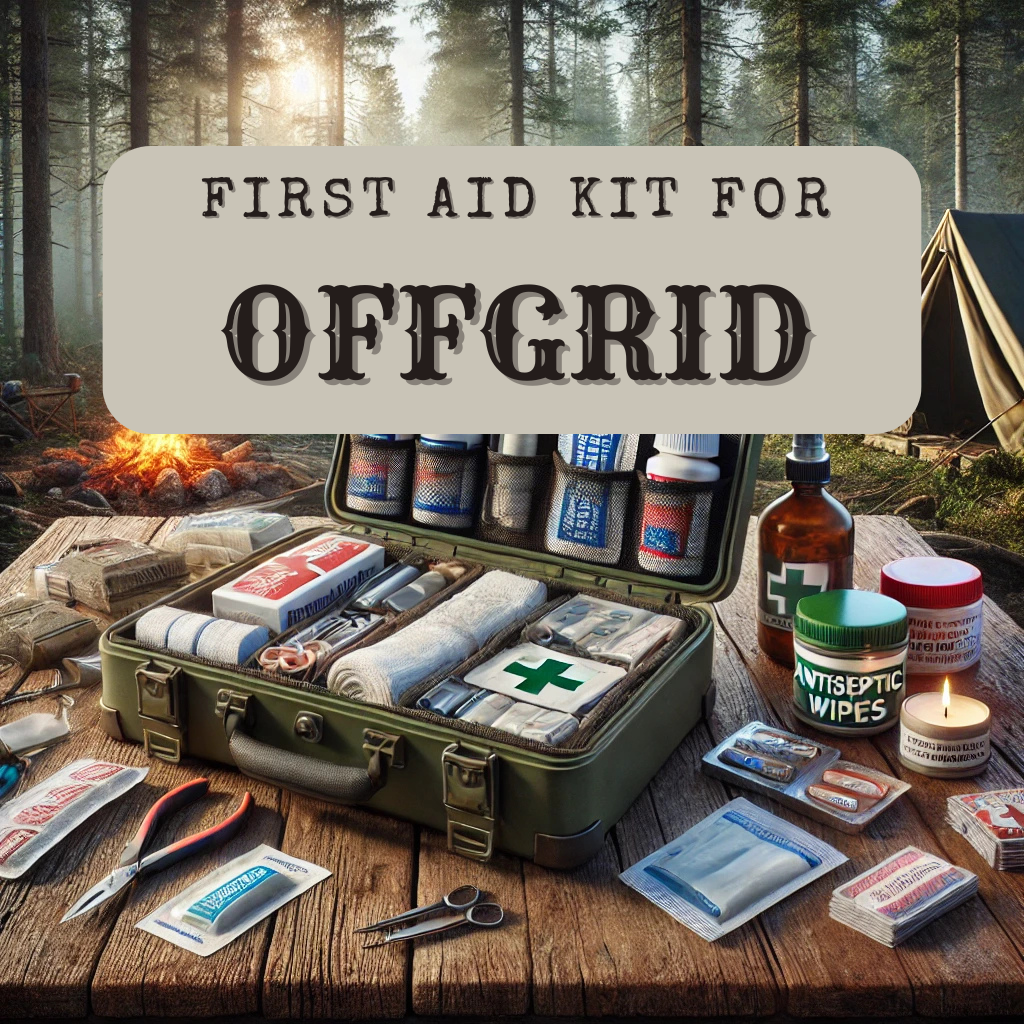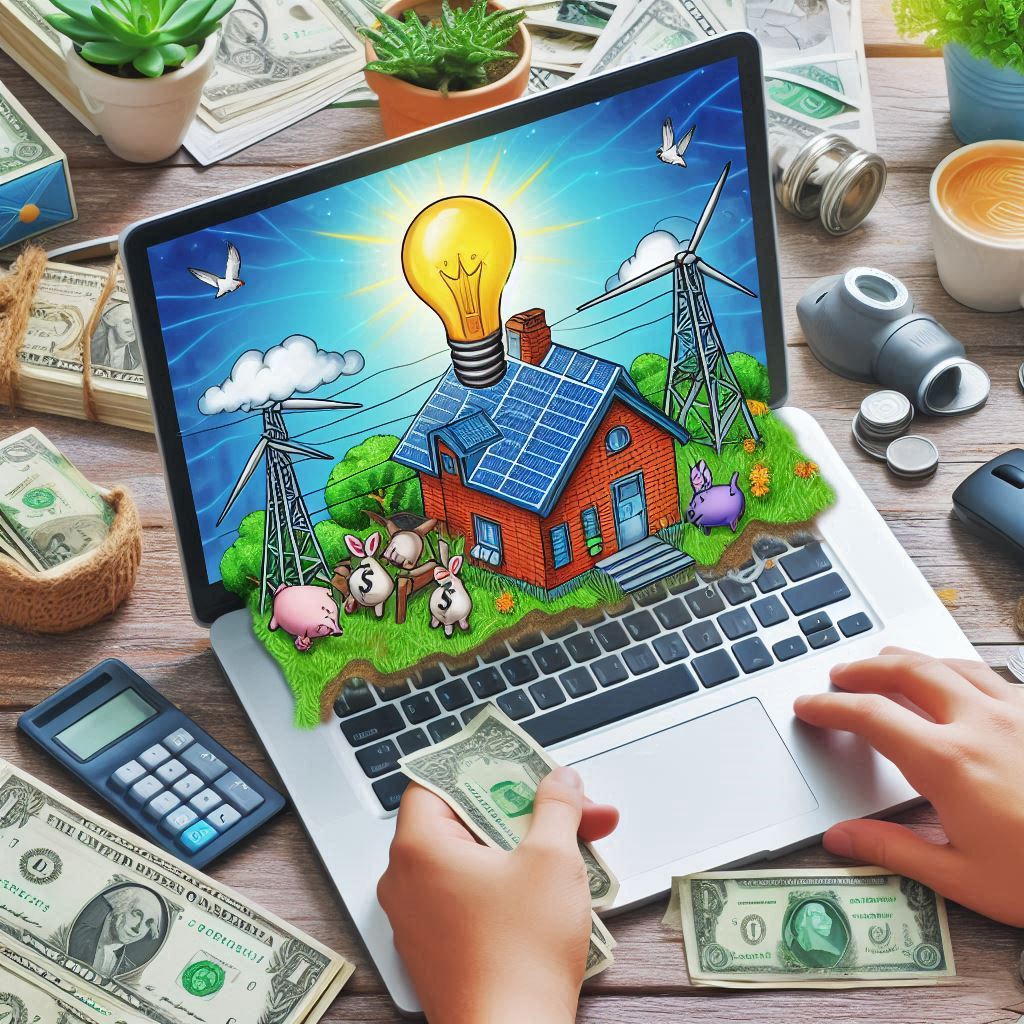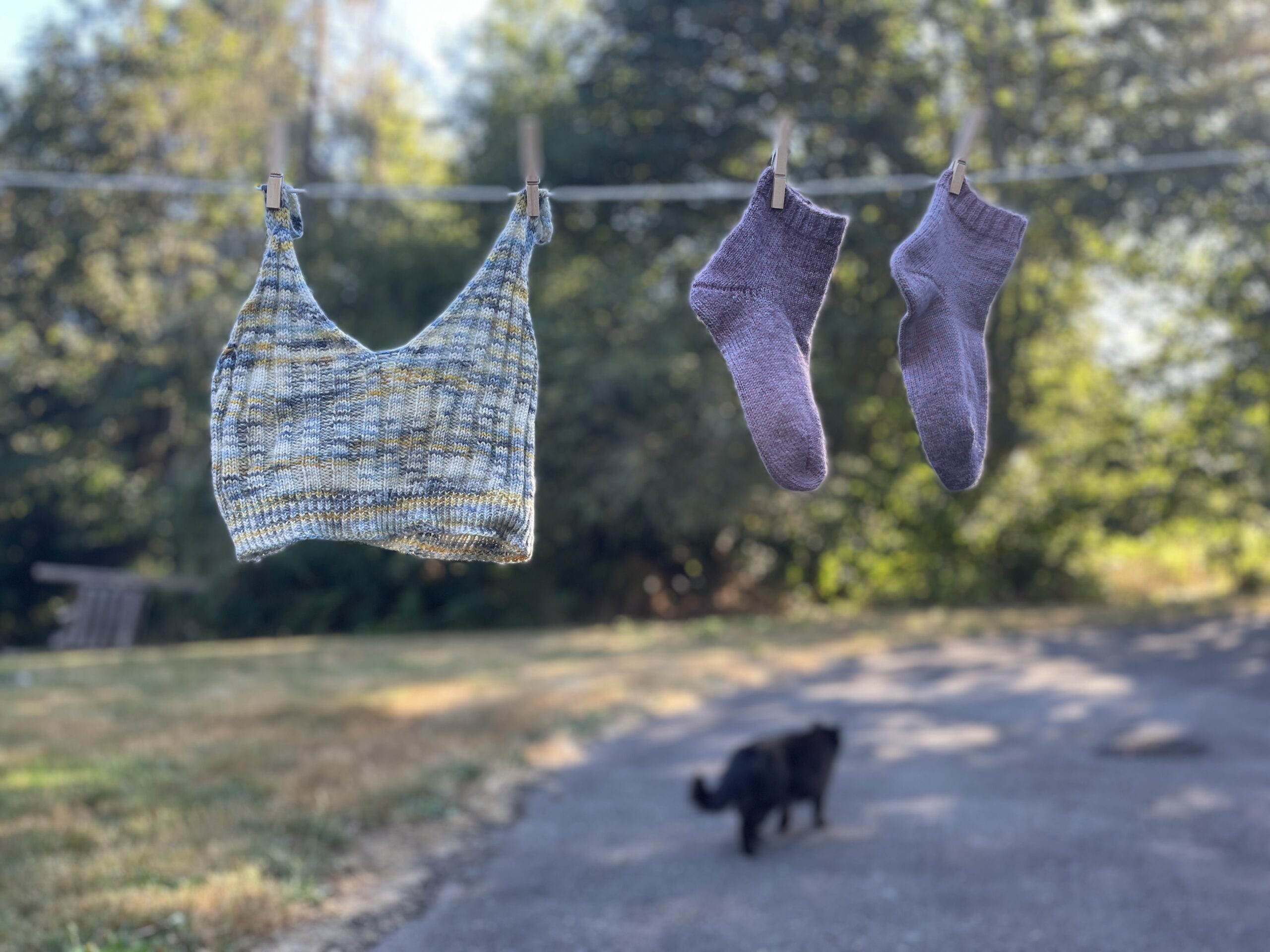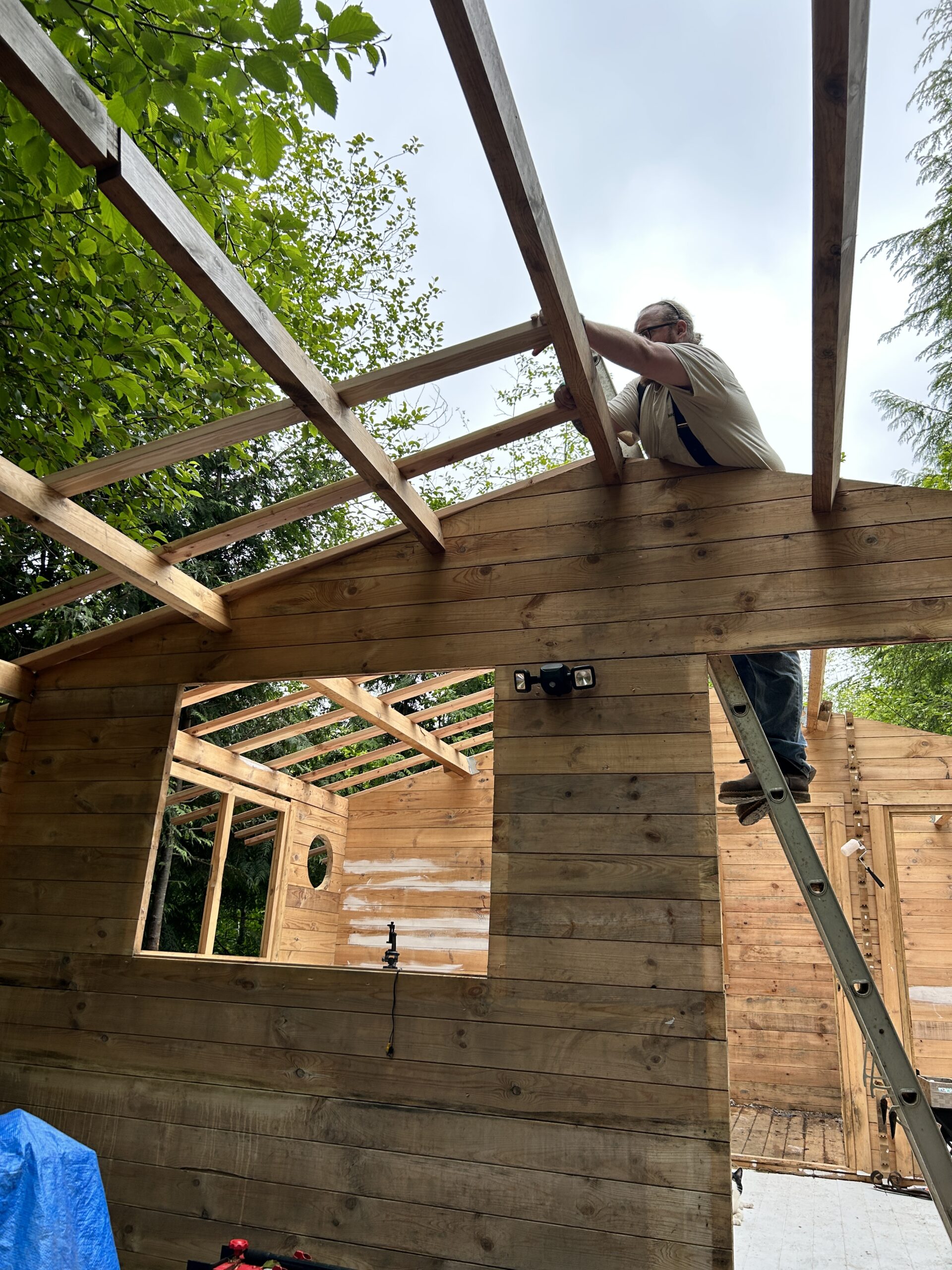No two off-grid stories are alike. Every person or family who decides to step away from modern conveniences does so for their own unique reasons, and ours is no exception. For us, off-grid living began as a dream born out of frustration—a longing to escape the endless grind of 9-to-5 jobs and the constant uphill battle to save money while barely keeping up with home repairs.
The Breaking Point
Tyler was working as a fireplace installer. It was tough, grueling work: 12-hour days in freezing rain, climbing ladders in the dark to install chimney piping, and hauling 200-pound fireplaces up narrow staircases. The paycheck was decent, but the trade-off was a non-existent work-life balance.
I, on the other hand, was a pharmacy technician. After working in the high-pressure environment of an inpatient pharmacy at a major metro hospital, I had switched to a community pharmacy for more flexible hours. By then, I was working part-time to spend more time at home with our son.
Despite our best efforts, something just didn’t feel right. We were stuck in a cycle—working hard but always feeling like we were falling behind. Life felt like a constant juggling act, and the idea of slowing down and living differently began to creep into our minds.
A Crazy Idea
We had always been intrigued by alternative lifestyles. Shows like Naked and Afraid and Alone sparked our curiosity, and we occasionally stumbled across off-grid YouTubers, binge-watching their content. Still, we never imagined we’d actually do it ourselves—until one day, Tyler asked me, “What if we went off-grid?”
At first, I didn’t know what to say. I’m a creature of habit, and the thought of giving up our comfortable rural home for something so unpredictable felt overwhelming. “No way,” I said. “What if we hate it? What if we want our old lives back?”
But Tyler wasn’t deterred. He gently pressed me: “What exactly are you worried about?” That’s when the floodgates opened.
Where would we live while we sold our house and looked for land? What would we do with all our belongings? What about our jobs? What would daily life even look like in this off-grid fantasy?
To be honest, I didn’t have answers—just fear. But the more we talked, the more we realized how burnt out we both were. It was the middle of COVID, and the cracks in society were becoming harder to ignore. Maybe it was time for a change.
Turning Questions into Plans
Over the next several months, we dove headfirst into research. We devoured videos on cabin building, bushcraft techniques, foundation construction, and even outhouse designs. Every spare moment was spent learning how to live closer to nature and embrace a simpler way of life.
I began to dream about a future where we’d reconnect with the world around us. I wanted our son to grow up knowing the names of plants and animals, not glued to screens or disconnected from the food he eats. I didn’t want him to think that meat only comes packaged on Styrofoam trays or that fruits and vegetables are nothing more than supermarket products.
In the U.S., we’re so removed from our food. Most of us couldn’t recognize a huckleberry bush or a wild onion, and processed foods dominate our diets. I wanted to step away from that—to take back control over what we consume and how we live.
Taking Control of Our Resources
Another big factor was independence. Could we really trust public utilities or the government to protect us and meet our basic needs? What if the power goes out during a storm? What if the water coming from the tap isn’t safe to drink?
By going off-grid, we put those critical systems into our own hands. Now we have the peace of mind that comes from knowing our water is always clean and our power won’t just “go out.” From choosing the materials for our water lines to deciding how we generate energy, we have control over our home—and it’s a freedom I wouldn’t trade for anything.
Adjusting to a New Way of Life
I won’t sugarcoat it: moving off-grid isn’t easy. The learning curve is steep, and there are plenty of challenges. We had to sell our house, downsize dramatically, and figure out how to adapt to an entirely new way of life. But two years in, I can honestly say I’ve never felt safer or more fulfilled. I don’t have an endless supply of water from my tap or unlimited electricity, but I’ll never go back.
We’ve built a life that aligns with our values—one where sustainability, self-reliance, and simplicity take center stage. It’s not perfect, and there are still days when we struggle, but it’s a journey I’m grateful we started.
What About You?
Off-grid living isn’t for everyone, but it’s worth asking yourself: What appeals to me about this lifestyle? Is it the promise of sustainability? A desire for self-sufficiency? A lack of confidence in the systems we rely on? Or maybe you’re just tired of feeling like a cog in the machine, working endlessly for the benefit of the ultra-wealthy.
Whatever your reason, know that living off-grid is possible. It takes research, planning, and a willingness to step outside your comfort zone, but the rewards are worth it. For us, it’s not just about survival—it’s about building a life that feels meaningful and authentic.
So, if you’ve ever dreamed of going off-grid, take a moment to imagine what that could look like for you. It might seem daunting, but as we’ve learned firsthand, the biggest changes often lead to the most rewarding adventures.

